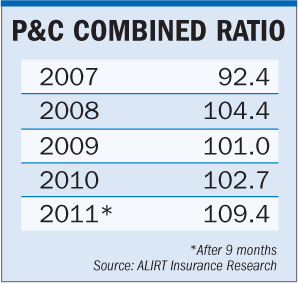Insurance-company executives, a global broker and analyst firms are weighing in on whether the market is hardening—and their responses include “yes,” “maybe,” and a debate over whether the traditional hard- and soft-market cycles are even relevant anymore in the marketplace.
 W.R. Berkley CEO William R. Berkley stated at the Goldman Sachs U.S. Financial Services Conference in New York on Dec. 6 that the industry is now “definitively in a hardening market…We’re just at the beginning of price increases.”
W.R. Berkley CEO William R. Berkley stated at the Goldman Sachs U.S. Financial Services Conference in New York on Dec. 6 that the industry is now “definitively in a hardening market…We’re just at the beginning of price increases.”
Aside from prices hardening, Berkley said terms and conditions are changing, allowing business written to become more profitable.
Recommended For You
Want to continue reading?
Become a Free PropertyCasualty360 Digital Reader
Your access to unlimited PropertyCasualty360 content isn’t changing.
Once you are an ALM digital member, you’ll receive:
- Breaking insurance news and analysis, on-site and via our newsletters and custom alerts
- Weekly Insurance Speak podcast featuring exclusive interviews with industry leaders
- Educational webcasts, white papers, and ebooks from industry thought leaders
- Critical converage of the employee benefits and financial advisory markets on our other ALM sites, BenefitsPRO and ThinkAdvisor
Already have an account? Sign In Now
© 2025 ALM Global, LLC, All Rights Reserved. Request academic re-use from www.copyright.com. All other uses, submit a request to [email protected]. For more information visit Asset & Logo Licensing.








